Uganda |
|
|
|
| Übersicht – Contents: | |
Uganda |
|
|
|
| Übersicht – Contents: | |
Flaggen – Flags: |
|
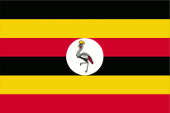 |
seit/since 1962, National-, Staats-, Handels- und Kriegsflagge – national, state, merchant and war flag, Seitenverhältnis – ratio 2:3, Quelle/Source, nach/by: Flags of the World   |
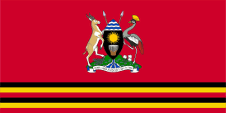 |
seit/since 1963, Flagge des Präsidenten – flag of the President, Seitenverhältnis – ratio 1:2, Quelle/Source, nach/by: Flags of the World |
historische Flaggen – historical Flags: |
|
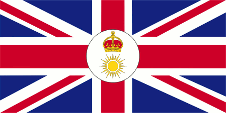 |
1890–1893, British East Africa, Flagge der Britischen Ostafrika-Kompanie – flag of the British East Africa Company, Seitenverhältnis – ratio = 1:2, Quelle/Source, nach/by: Flags of the World |
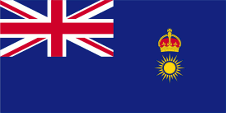 |
1893–1914, British East Africa, Flagge der Regierung (Staatsflagge) – flag of the government (state flag), Seitenverhältnis – ratio = 1:2, Quelle/Source, nach/by: Flags of the World |
 |
1894–1962, |
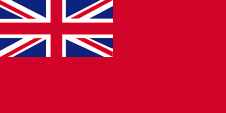 |
1894–1962, |
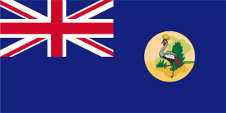 |
1914–1962, |
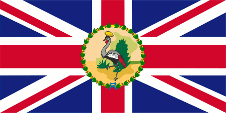 |
1914–1962, |
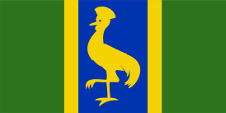 |
1962, National-, Staats- und Handelsflagge – national, state and merchant flag, Seitenverhältnis – ratio 1:2, Quelle/Source, nach/by: Flags of the World |
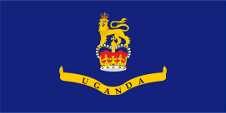 |
1962–1963, Flagge des Generalgouverneurs – flag of the Governor General, Seitenverhältnis – ratio 1:2, Quelle/Source, nach/by: Flags of the World |
|
Nach der Berliner
Kongokonferenz (1884/1885) wurde die Britische Ostafrika-Kompanie (IBEA)
gegründet um den Osten Afrikas wirtschaftlich und kolonial zu erschließen.
Kurze Zeit später wehte die Flagge der Gesellschaft außer über Kenia auch
über dem Gebiet heutigen Uganda, das damals aus vielen einheimischen
Königreichen bestand. Wegen Missmanagements der IBEA übernahm ab 1893 das
britische Außenministerium die Hoheitsrechte der Kompanie, die bis ca. 1903
durchgesetzt waren, so das ab 1893 die Flagge Großbritanniens über dem Land
wehte. An Land, bis 1864 auch zur See, repräsentierten der einzelne Bürger
und auch die Behörden ihren Status als Bürger oder Organe des United Kingdom
durch die Verwendung des Union Jack, "Union Flag" genannt. Großbritannien hatte in Jahr 1864 ein Flaggensystem eingeführt, in dem: • Kriegsschiffe einen sogenannten "White Ensign" (Marineflagge), eine weiße Flagge oft mit durchgehendem roten Georgskreuz und mit dem Union Jack in der Oberecke, • Handelsschiffe einen "Red Ensign" (auch "Civil Ensign" → Bürgerflagge genannt, die eigentl. Handelsflagge), eine rote Flagge mit dem Union Jack in der Oberecke, und • Dienstschiffe einen "Blue Ensign" (Regierungsflagge → die eigentliche Staatsflagge), eine blaue Flagge mit dem Union Jack in der Oberecke führten. Seit 1865 durften Schiffe von Kolonialregierungen einen Blue Ensign mit einem Badge (Abzeichen) im fliegenden Ende verwenden. Die jeweiligen Regierungen sollten entsprechende Bagdes zur Verfügung stellen. Für alle anderen Zwecke war ab diesem Zeitpunkt an Land ausschließlich der britische Union Jack zu verwenden und zur See die übliche rote britische Handelsflagge, der "Red Ensign". Wenn die britische Admiralität der Kolonie die entsprechende Erlaubnis erteilt hatte, durften Handelsschiffe und private Seeleute dieser Kolonien einen Red Ensign mit dem Bagde führen. Dies war für Ostafrika bzw. Kenia und auch Uganda nicht der Fall. Die jeweiligen Regierungen sollten entsprechene Bagdes zur Verfügung stellen. Ein solches Badge war oft eine auf einer Scheibe platzierte regionale landschaftliche Darstellung, zeigte oft Schiffe, historische Begebenheiten oder konnte auch nur eine Art Logo sein. Sehr oft zeigte ein Badge zusätzlich den Namen des Landes oder auch einen Wahlspruch. Einige Besitzungen hatten aber auch schon von Anfang an ein Wappen, bzw. erhielten über die Jahre eine eigenes Wappen und das Badge wurde abgeschafft. Um ein weitgehend einheitliches Erscheinungsbild im fliegenden Ende der Flaggen zu gewährleisten, wurden Wappen und auch andere Symbole auf einer weißen Scheibe in der Größe der früheren Badges dargestellt. Es gab hier aber auch Ausnahmen, denn einige Kolonien verwendeten diese weiße Scheibe nicht, und platzierten ihr Wappen oder auch nur das Wappenschild - manchmal auch vergrößert - direkt auf das Flaggentuch. Schon in den 40-er Jahren wurde dazu übergegangen die weißen Scheiben zu entfernen und das Wappen direkt zu platzieren oder vergrößert dazustellen. Dieser Umstellungsprozess erfolgte allmählich, nirgendwo gleichzeitig und vollständig. In einigen britischen Besitzungen sind bis heute Flaggen mit der weißen Scheibe in Gebrauch, in anderen nicht mehr und in einigen Gebieten gibt es beide Varianten nebeneinander. Ab 1893 verwendete die Regierung von Britisch-Ostafrika (auch in Uganda), als britische Kolonie, eine eigene blaue Dienstflagge (Blue Ensign) mit einem Badge im wehenden Teil der Flagge. Das Badge war das beibehaltene Logo der Britischen Ostafrika-Kompanie. Es zeigte eine Sonne mit 24 Strahlen unterhalb der britischen Krone. Das Badge erschien direkt auf dem Flaggentuch und war nicht auf einer weißen Scheibe platziert. Ab 1910 hatte Uganda auch einen Gouverneur. Die blaue Dienstflagge wurde in Uganda 1914 mit einem neuen Badge ausgestattet, in Kenia 1921. Das Badge von Uganda war eine Scheibe und zeigte eine Landschaftsdarstellung mit einem Kronenkranich. Diese Dienstflagge wurde bis zum 01.03.1962 beibehalten. Zu jenem Datum wurde eine neue Flagge eingeführt, sie zeigte drei senkrechte Streifen in Grün, Blau und Grün mit goldenen Trennstreifen und in der Mitte des blauen Feldes einen goldenen Kronenkranich. Großbritannien gewährte Uganda am 09.10.1962 die Unabhängigkeit im Rahmen des Commonwealth, der britische Monarch blieb so Staatsoberhaupt, der vor Ort durch den Generalgouverneur vertreten wird, allerdings nur bis zum 09.10.1963, als Uganda eine Republik wurde. Das Land verblieb jedoch im Commonwealth. Anlässlich der Unabhängigkeit wurde die heutige Flagge eingeführt. Sie zeigt sechs waagerechte Streifen in Schwarz, Gelb, Rot, Schwarz, Gelb und Rot mit einer weißen Scheibe im Zentrum mit einem Kronenkranich in der Mitte. Schwarz, Gelb und Rot sind die ehemaligen Farben des Uganda People's Congress, der Partei, die das Land in die Unabhängigkeit geführt hat. Rot steht für die Brüderlichkeit aller Menschen, Gelb für die Sonne, Schwarz für die Menschen und für Afrika. Der Kronenkranich wurde vom Badge von Britisch-Uganda übernommen. Die Farben der Flagge orientieren sich vermutlich am britischen Farbsystem, so dass das Farbsystem des Britischen Verteidigungsministeriums gültig sein könnte. Das sieht vor, für Rot = Pantone 186 c und für Tiefgelb = Pantone 116 c. |
After the Berlin Congo
Conference (1884/1885), the Imperial British East Africa Company (IBEA) was
founded to develop East Africa economically and colonially. A short time
later, the company's flag flew not only over Kenya but also over what is now
Uganda, which at the time consisted of many indigenous kingdoms. Due to mismanagement by the IBEA, the British Foreign Office took over the sovereign rights of the company from 1893, which were enforced until around 1903, so that from 1893 the flag of United Kingdom flew over the country. On land, and until 1864 also at sea, individual citizens and the authorities represented their status as citizens or organs of the United Kingdom by using the Union Jack, known as the "Union Flag". United Kingdom had introduced a flag system in 1864 in which: • Warships use a so-called "White Ensign" (naval flag), a white flag often with a red St. George's cross throughout and with the Union Jack in the upper corner, • Merchant ships use a so-called "Red Ensign" (also called "Civil Ensign" → citizen flag, the actual merchant flag), a red flag with the Union Jack in the upper corner, and • Governmental ships use a "Blue Ensign" (flag of the government → the actual state flag), a blue flag with the Union Jack in the upper orner. Since 1865, colonial government ships were permitted to use a Blue Ensign with a badge in the flying end. From this point on, only the British Union Jack was to be used for all other purposes on land and the usual red British merchant flag, the "Red Ensign", at sea. If the British Admiralty had granted the appropriate permission to one colony, merchant ships and private sailors from this colony were allowed to use a Red Ensign with the Bagde. This was not the case for East Africa, Kenya or Uganda. The respective governments should provide appropriate bagdes. Such a badge was often a regional landscape representation placed on a disk, often showed ships, historical events or could just be a kind of logo. Very often a badge also showed the name of the country or a motto. However, some possessions had a coat of arms right from the start, or received their own coat of arms over the years and the badge was abolished. In order to ensure a largely uniform appearance in the flying end of the flags, coats of arms and other symbols were displayed on a white disk the same size as the earlier badges. But there were exceptions here, as some colonies did not use this white disk and placed their coat of arms or just the shield – sometimes enlarged – directly on the flag cloth. As early as the 1940s, the white discs were removed and the coat of arms was placed directly or enlarged. This transition process occurred gradually, never simultaneously and completely. In some British possessions flags with the white disc are still in use, in others they are no longer used and in some areas both variants exist side by side. From 1893, the government of British East Africa (also in Uganda), as a British colony, used its own blue ensign with a badge in the waving part of the flag. The badge was the retained logo of the British East Africa Company. It showed a sun with 24 rays below the British crown. The badge appeared directly on the flag cloth and was not placed on a white disc. From 1910 Uganda also had a governor. The blue official flag was equipped with a new badge in Uganda in 1914 and in Kenya in 1921. The badge of Uganda was a disc and showed a landscape depiction with a Grey Crowned Crane. This official flag was retained until 1st of March in 1962. On that date, a new flag was introduced, showing three vertical stripes in green, blue and green with golden dividing stripes and a golden Crowned Crane in the centre of the blue field. United Kingdom granted Uganda independence within the Commonwealth on 9th of October in 1962, and the British monarch remained head of state, represented locally by the Governor-General, but only until 9th of October in 1963, when Uganda became a republic. However, the country remained in the Commonwealth. The current flag was introduced on the occasion of independence. It shows six horizontal stripes in black, yellow, red, black, yellow and red with a white disc in the centre with a Grey Crowned Crane in the middle. Black, yellow and red are the former colours of the Uganda People's Congress, the party that led the country to independence. Red stands for the brotherhood of all people, yellow for the sun, black for the people and for Africa. The Crowned Crane was adopted from the badge of British Uganda. The colours of the flag are presumably based on the British colour system, so that the colour system of the British Ministry of Defence could be valid. This provides for red = Pantone 186 c and for deep yellow = Pantone 116 c. |
| Quelle/Source: Flaggen-Atlas Erde, Flags of the World, Die Welt der Flaggen, Wikipedia (EN), Volker Preuß | |
Wappen – Coat of Arms: |
|
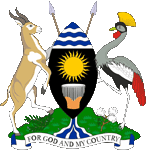 |
seit/since 1962, Wappen von Uganda – coat of arms of Uganda, Quelle/Source, nach/by: Corel Draw 4 |
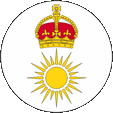 |
1890–1893, British East Africa, Badge der Britischen Ostafrika-Kompanie – badge of the British East Africa Company, Quelle/Source, nach/by: Flags of the World |
 |
1893–1914, British East Africa, Badge von Britisch-Ostafrika/Uganda – badge of the British East Africa/Uganda, Quelle/Source, nach/by: Flags of the World |
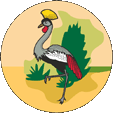 |
1914–1962, Badge von Uganda – badge of Uganda, Quelle/Source, nach/by: Flags of the World |
| Das Staatswappen wurde am 21.09.1962 kurz vor Erlangung der Unabhängigkeit angenommen. Es zeigt einen Bantu-Schild vor zwei gekreuzten Speeren, in seinem oberen Teil mehrere blaue Wellenlinien (sie stehen für die vielen Seen und Flüsse des Landes), in der Mitte des Schildes eine goldene Sonne (Hinweis auf die Lage des Landes unter dem Äquator), und im unteren Teil eine Trommel (Symbol für die königliche Macht). Als Schildhalter dienen eine Gazelle und ein Kronenkranich. Das Schild steht auf einem grünen Hügel mit Kaffee- und Baumwollpflanzen, über den ein Gewässer herabfließt (Quelle des Nil). Darunter in einem Banner das Motto des Landes: "For God and my Country" → "Für Gott und mein Vaterland". Das Badge der Britischen Ostafrika-Kompanie zeigte eine Sonne mit 24 Strahlen unterhalb der britischen Krone. Es wurde bis 1914 beibehalten, danach war es bis 1962 eine Scheibe mit einer Landschaftsdarstellung mit einem Kronenkranich. |
The national coat of arms
was adopted on 21st of September in 1962 shortly before independence was
achieved. It shows a Bantu shield in front of two crossed spears, in its
upper part several blue wavy lines (representing the country's many lakes
and rivers), in the centre of the shield a golden sun (indicating the
country's location below the equator), and in the lower part a drum
(symbolising royal power). A gazelle and a crowned crane serve as supporters
(shield holders). The shield stands on a green hill with coffee and cotton plants, over which a body of water flows (source of the Nile). Below it, the country's motto in a banner: "For God and my Country" → "For God and my Fatherland". The badge of the British East Africa Company showed a sun with 24 rays below the British crown. It was retained until 1914, after which it was a disc depicting a landscape with a crown crane until 1962. |
| Quelle/Source: Flaggen Wappen Hymnen, Die Welt der Flaggen, Wikipedia (EN), Volker Preuß | |
Flugzeugkokarde – aircraft roundel: |
|
 |
Flugzeugkokarde #1 – aircraft roundel Quelle/Source, nach/by Wikipedia (EN) |
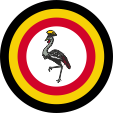 |
Flugzeugkokarde #2 – aircraft roundel Quelle/Source, nach/by Wikipedia (EN) |
Landkarte – Map: |
Lage – Position: |
Landkarte des Landes – Map of the Country: |
|
|
| Zahlen und Fakten – Numbers and Facts: | |
|
|
|
|
|
|
|
|
|
|
|
|
|
|
|
|
|
|
Die Königreiche – the Kingdoms: |
|
| Am 08.09.1967 wurden die historischen Königreiche abgeschafft. Das Land war lediglich in 4 Verwaltungsregionen, 15 Unterregionen und 121 Distrikte aufgeteilt. Am 24.07.1993 wurden die Möglichkeit geschaffen, die alten Königreiche wieder einzuführen, um ein gewisses Maß an vor allem kultureller Autonomie zu gewährleisten. In einem bis heute anhaltenden Prozess sind einige Königreiche nach und nach wiedererstanden, so existierten bis 2024 folgende größere Königreiche: Toro, Busoga, Bunyoro, Buganda und Rwenzururu. Das Königreich Ankole, früher ein bedeutendes Königreich, hat bis heute noch keine Anerkennung erhalten. Jedoch sind mehrere andere Königreiche (Padhola) und Häuptlingstümer (Alur, Iteso, Lango) von der Regierung offiziell anerkannt worden. Die Grenzen der größeren Königreiche verlaufen zum allergrößten Teil entlang der Grenzen von Unterregionen. |
On 8th of September in
1967, the historical kingdoms were abolished. The country was only divided into 4 administrative regions, 15 sub-regions and 121 districts. On 24th of July in 1993, the possibility was created to reintroduce the old kingdoms in order to guarantee a certain degree of autonomy, especially cultural autonomy. In a process that continues to this day, some kingdoms have been gradually re-established, with the following major kingdoms existing until 2024: Toro, Busoga, Bunyoro, Buganda and Rwenzururu. The kingdom of Ankole, once an important kingdom, has not yet been recognised. However, several other kingdoms (Padhola) and chiefdoms (Alur, Iteso, Lango) have been officially recognised by the government. The borders of the larger kingdoms run for the most part along the borders of sub-regions. |
| Quelle/Source: Wikipedia (EN) | |
|
|
|
 Map/Landkarte: CIA World Factbook, modyfied by: Volker Preuß |
|
|
|
|
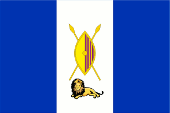 |
Buganda seit/since 1993, Flagge von Buganda – flag of Buganda Quelle/Source, nach/by: Mysid, Public domain, via Wikimedia Commons |
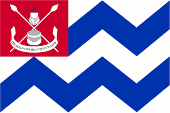 |
Bunyoro seit/since 1993, Flagge von Bunyoro – flag of Bunyoro Quelle/Source, nach/by: World Statesmen |
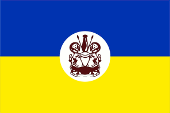 |
Toro seit/since 1993, Flagge von Toro – flag of Toro Quelle/Source, nach/by: World Statesmen |
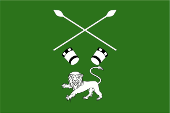 |
Ankole seit/since 1993, Flagge von Ankole – flag of Ankole Quelle/Source, nach/by World Statesmen |
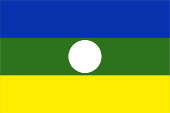 |
Rwenzururu seit/since 2007, Flagge von Rwenzururu – flag of Rwenzururu Quelle/Source, nach/by: World Statesmen |
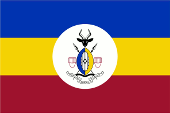 |
Busoga seit/since 1995, Flagge von Busoga – flag of Busoga Quelle/Source, nach/by: Jolle, CC BY 3.0, via Wikimedia Commons |
|
9. Jahrhundert
· Entstehung von Bantu-Stammesstaten im Süden des Landes 17. Jahrhundert · das Königreich Kitwara dominiert die Region 18. Jahrhundert · das Königreich Bunyoro dominiert die Region 19. Jahrhundert · das Königreich Buganda dominiert die Region 1858 · der britische Forscher John Hanning Speke entdeckt den Victoriasee und erkennt ihn als Quellsee des Nils 1871 · Einfall ägyptischer Truppen, der von Niloten bewohnte Norden des Landes kommt als Äquatorprovinz an Ägypten 1877 · Beginn der christlichen Missionierung 1882 · britische Truppen erobern Ägypten 1884/1885 · Kongokonferenz, die britischen Ansprüche auf Buganda werden anerkannt 1885 · der deutsche Kolonialpolitiker Carl Peters besucht Buganda, Abschluss von Verträgen 1882–1898 · Mahdi-Aufstand im Sudan, der Gouverneur der ägyptischen Äquatorprovinz Emin Pascha zieht sich von 1885 bis 1889 nach Wadelai im Norden des Landes zurück 1890 · Ugandavertrag, die Imperial British East Africa Company (IBEA) erwirbt alle deutschen Rechte in Buganda und beginnt mit der Kolonisierung der Region 1893 · das Außenministerium von Großbritannien übernimmt die Verwaltung der Gebiete in Uganda, ab 1895 auch in Kenia, wegen Missmanagements der IBEA 1893 · das Königreich Buganda wird Britisches Protektorat 1894 · Gründung des Protektorats Uganda 1896 · die Königreiche Toro und Bunyoro werden Britisches Protektorat, Buganda, Toro und Bunyoro werden an Uganda angeschlossen 1900 · das Königreich Ankole wird Britisches Protektorat 1900 · Einwanderung von Indern (heute 0,5% der Bevölkerung) 01.04.1905 · Uganda wird aus Britisch-Ostafrika herausgelöst und wird eigenständige Kolonie bis 1910 · die Stammesgebiete im Südwesten (Chiga, Mpororo), Norden (Lango, Madi, Lugbara, Alur) und Osten (Kumam, Teso, Basoga, Bagischu) werden Britisches Protektorat bis 1920 · die Stammesgebiete im Nordosten (Acholi, Karamojong) werden Britisches Protektorat 1946 · antibritische Unruhen 1949 · antibritische Unruhen 1953 · der König von Buganda fordert mehr Freiheiten, antibritische Unruhen 1958 · erste Wahlen, Boykott im Königreich Buganda 1960 · anti-monarchistische Unruhen in Buganda 30.12.1960 · Buganda erklärt einseitig seine Unabhängigkeit und den Austritt aus dem britischen Protektorat Uganda, Widerstände der Stammesregionen 1961 · Wahlen, neue Verfassung 01.03.1962 · Großbritannien gewährt Selbstverwaltung (innere Autonomie) Juni 1962 · Ugandakonferenz, Abkommen über eine föderative Struktur des Landes 09.10.1962 · Großbritannien gewährt die Unabhängigkeit im Rahmen des Commonwealth of Nations 09.10.1963 · Uganda wird Republik, Präsident wird der König von Buganda 1966 · Milton Obote wird Präsident 08.09.1967 · die Königreiche werden abgeschafft 25.01.1971 · Militärputsch durch Idi Amin, Absetzung von Obote 1979 · Vertreibung Amins durch Truppen aus Tansania, das Land bleibt bis 1981 von Truppen Tansanias besetzt 1980 · Wahlen, Milton Obote wird erneut Präsident 1985 · Bürgerkrieg, Obote geht ins Exil, neue Regierung unter Tito Okello 1987 · Bürgerkrieg 24.07.1993 · die Königreiche werden wieder eingeführt 1995 · neue Verfassung 1996 · erste freie Präsidentschaftswahlen, Yoweri Museveni wird Präsident 1997 · Truppen aus Kongo-Kinshasa operieren in Uganda 12.03.2001 · Präsidentschaftswahlen, Yoweri Museveni wird erneut Präsident 2010 · regionale und teilweise Beruhigung des Bürgerkriegs 2011 · Unruhen |
|
9th century
· nascence of Bantu tribal states in the south of the country 17th century · the kingdom of Kitwara dominates the region 18th century · the kingdom of Bunyoro dominates the region 19th century · the kingdom of Buganda dominates the region 1858 · the British explorer John Hanning Speke discovers the Victoria Sea and perceives it as the spring-sea of Nile River 1871 · invasion of Egypt troops, the by Nilots inhabited north of the country comes as Equator Province to Egypt 1877 · start of the christian mission 1882 · British troops conquer Egypt 1884/1885 · Congo Conference, the British claims for Buganda become recognized 1885 · the German colonial politician Carl Peters visits Buganda, making contracts 1882–1898 · Mahdi revolt in Sudan, Emin Pascha the governor of the Egypt Equator Province withdraws from 1885 to 1889 to Wadelai in the north of the country 1890 · Uganda Treaty, the Imperial British East Africa Company (IBEA) purchases all German rights in Buganda and starts with the colonization of the region 1893 · the Foreign Office of United Kingdom takes over the administration of the territories in Uganda, from 1895 also in Kenya, due to mismanagement by the IBEA 1893 · the kingdom of Buganda becomes a British protectorate 1894 · establishment of the Protectorate of Uganda 1896 · the kindoms of Toro and Bunyoro become British protectorates, Buganda, Toro and Bunyoro become connected to Uganda 1900 · the Kingdom of Ankole becomes a British protectorate 1900 · immigration of Indians (today 0,5% of the population) 1st of April in 1905 · Uganda gets separated from British East Africa and becomes an individual colony to 1910 · the tribal territories in the southwest (Chiga, Mpororo), north (Lango, Madi, Lugbara, Alur) and east (Kumam, Teso, Basoga, Bagishu) become British protectorates to 1920 · the tribal territories in the northeast (Acholi, Karamojong) become British protectorates 1946 · anti British agitations 1949 · anti British agitations 1953 · the king of Buganda claims more freedom, anti British agitations 1958 · first elections, boycott in the kingdom of Buganda 1960 · anti monarchistic agitations in Buganda 30th of December 1960 · Buganda declares unilaterally its independence and the withdrawal from the British protectorate of Uganda, resistance of the tribal territories 1961 · elections, new constitution 1st of March 1962 · United Kingdom grants self-administration (inner autonomy) June 1962 · Uganda Conference, agreement about a federative structure of the country 9th of December 1962 · United Kingdom grants the independence within the framework of the Commonwealth of Nations 9t of December 1963 · Uganda becomes republic, president becomes the King of Buganda 1966 · Milton Obote becomes president 8th of September 1967 · the kingdoms become abolished 25th January 1971 · military coup d’état by Idi Amin, deposition of Obote 1979 · expulsion of Amin by troops of Tanzania, the country remains occupied by troops of Tanzania until 1981 1980 · elections, Milton Obote becomes president again 1985 · civil war, Obote goes in exile, new government under Tito Okello 1987 · civil war 24th of July 1993 · the kingdoms become re-established 1995 · new constitution 1996 · first free president's elections, Yoweri Museveni becomes president 1997 · troops from Kongo-Kinshasa operate in Uganda 12th of March 2001 · president's elections, Yoweri Museveni becomes president again 2010 · regional and partial calming of the civil war 2011 · riots |
| Quelle/Source: Atlas zur Geschichte, Wikipedia (D), Discovery '97, Volker Preuß |
| Der Name "Uganda" leitet sich vom Königreich Buganda ab, dem größten und mächtigsten der vier Königreiche im Land. "Buganda" heißt "Land der Ganda", wobei Ganda "Leute" heißt. Die Baganda sind der größte Bantu-Stamm im Lande, mit 17% Anteil an der Bevölkerung. | The name "Uganda" derives from the Kingdom of Buganda, the bigest and mightyest of the four kingdoms in the country. "Buganda" means "Land of the Ganda", and Ganda means "people". The Baganda are the bigest Bantu tribe in the country with 17% of the population. |
| Quelle/Source: Wikipedia (EN), Atlas der wahren Namen, Volker Preuß | |